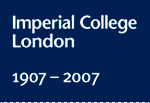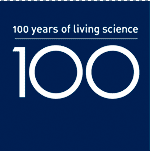Cedric E Turner
(Mechanical Engineering 1948 - present)
Shares his impressions and recollections of the
Mechanical Engineering Department since 1948
- Early Impressions of a'New Boy'
- A Domestic Recollection
- The First Half of the 20th Century
- Mid 20th Century
- Organisation
- Teaching
- An Interruption
- The Second Half of the 20th Century
- My Own Work and that of Closely Related Colleagues
- A Personal Interruption
- Research in Fracture Mechanics
Early Impressions of a 'New Boy’
I was appointed as a Research Assistant, in the Mechanical Engineering Department, the lowest of the low grades of staff, in December 1948. As an ‘outsider' (i.e a graduate from a different institution) I could not help but note that the great majority of staff were ex-City & Guild students so that there seemed almost a ‘tribal’ spirit in the Department, 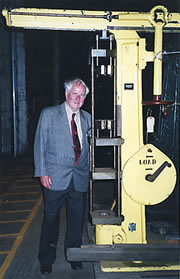 although signs of significant changes seemed to be appearing.
although signs of significant changes seemed to be appearing.
In talking to senior lecturing staff I soon learned that in their early careers in the 1920s and 30s, they had been actively restricted from conducting their own research. Any research had to be undertaken in support of the Head of Department, in whose name most, if not all, work was conducted, be it for consulting or publication. This had, however, changed in the 1940s, during and just after the Second World War.
The second obvious feature was that the equipment was very largely old fashioned, some dating back to the first decade of the 20th century if not the end of the 19th century. Again signs of change were visible though limited by the immediate shortages in the aftermath of the War.(Photo above: Me in 2000 with a 5-ton simple lever-arm Buckton testing machine used for 1st year undergraduate teaching from about 1920 to 1985. Now at the Science Museum Reserve Collection.)
I recall, in 1948, the awe in which new students held some of the senior lecturers, whose names were synonymous with well known undergraduate text books. At that time the Department had two main lines of activity; Thermodynamics (with a specialisation in Heat Transfer and some Fluid Mechanics) led by the Head of Department, Professor Sir Owen Saunders and Applied Mechanics (particularly Strength of Materials and Dynamics) lead by Dr. Hugh Ford (later Professor Sir Hugh). In both fields, research was under way involving staff appointed just after the War. I joined those working on Strength of Materials. There thus existed a rather marked dichotomy between the older staff renowned for their text books and teaching and the ‘young turks’ trying to make their way up the research ladder, albeit teaching at the same time.
A Domestic Recollection
A laboratory steward (as then called), Mr. Ernest Cox, was probably alone in being born within the old City & Guilds building.
As I recall him telling me, he was born (I think) in the last few years of the 19th century. His father was the Head Porter (as then called) of the City & Guilds College and lived in a flat on the top floor of the then red-brick building (by Waterhouse) dating from around 1890. Ernie, as he was known to generations of students, worked as a baker’s roundsman from about age 14 to 16 and then joined the College staff as a junior technician--I do not know the actual grade. In the First World War he served in the Army on the little known front in northern Greece and then returned to the College.
I do not know in what capacity he served in the College in the inter-war years but he told stories of annual trips to Epsom Downs to see the Derby, when students armed with ‘toppers’ and bottles of ‘bubbly’ would hire an open top bus for the occasion. From at least the late 1940s onwards, Ernie was the senior technician in the main undergraduate Strength of Materials laboratory. That laboratory housed the first post-war machine already mentioned and the first three of Hugh Ford’s research workers in Materials, including me, used that machine and thus got to know Ernie quite well.
In the mid 1950’s he moved with several staff to the so-called ‘transit camp’, set up, as mentioned below, as the first move in the re-building of the College. He returned to work in the new (present) building until he retired in about the mid-1960s.
The First Half of the 20th Century
It is worth recalling that, from its inception, many ex-City and Guilds engineers were spread around the world (I recall seeing a map, perhaps in the 1960s showing an earlier distribution) and that much of the infrastructure of the Empire, not to mention commercial contacts world wide, seemed to be in the hands of these ‘practical engineers’ whose training had been mainly in the design, manufacture and maintenance aspects of Mechanical Engineering, taught with great emphasis on experimental work.
Physics and Mathematics were applied to engineering in the mid-18th century in France but the concept of Engineering Science did not arise in this country until at least 100 years later. The teaching syllabuses started to reflect Engineering Science at least in the University of Oxford in the first decade of the 20th century but made little headway in the metropolitan universities until the middle of the century. As far as I could tell as a young ‘outsider’ some teaching started to reflect this approach at about the same time as research became of significant interest, with the influx of new staff around the end of World War II.
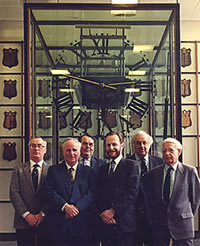 It is difficult now to identify mechanical engineering ‘ideas and inventions that have changed society’, based on the academic world. The great changes of the Industrial Revolution and of the expansion of Empire and world trade had occurred mainly from gifted practical engineers, well before the College, or indeed other colleges of engineering, had been conceived in this country. Even the later inventions, such as steam turbines and aeroplanes, did not arise in academia.
It is difficult now to identify mechanical engineering ‘ideas and inventions that have changed society’, based on the academic world. The great changes of the Industrial Revolution and of the expansion of Empire and world trade had occurred mainly from gifted practical engineers, well before the College, or indeed other colleges of engineering, had been conceived in this country. Even the later inventions, such as steam turbines and aeroplanes, did not arise in academia.
The important role of all engineering colleges, such as in Manchester, Oxford, London and a few other centres was in helping understand the fundamentals on which steam engines, internal combustion engines, turbines, bridges, ships and so on were based, so that great improvement in efficiency, power output, and sheer size could be made with some confidence and safety. In mechanical engineering, the effects of increases in engine pressure, temperature and speeds in particular, demanded better understanding if economical and safe designs were to succeed. (Photo above: The C&G clock from the Waterhouse Building, where it was in the tower and had a long simple pendulum, now in the entrance lobby of the Mechanical Engineering Building lobby. Because of the restricted headroom, it was modified to work with a small compound pendulum. This was designed by a group of third year students under the direction of Professor Alstair Cameron. Back row left to right; Colin Rogers (Mechanical Engineering Superintendent), visitor, Dr Sacha Kennaway; front row left to right me and two visitors (1988).
Thus at the City & Guilds, around the turn of the 19th century to 20th century C. W. Unwin greatly enhanced the understanding of Strength of Materials (then mainly metals) which allowed industry to develop many improved designs, vital to manufacturing, transport and so on. W. E. Dalby continued in this tradition of materials, developing near frictionless and inertia-free optical recorders for testing metals in the days before cathode ray tubes were known. Dalby also worked on the dynamics of the inertia forces in railway engines at a time when ever heavier and more powerful steam engines were being introduced on the railways. These topics were integrated into undergraduate courses in a first move away from the more empirical approach of earlier courses at various colleges or institutes around the country.
Thus the seed corn was sown for several generations of engineers with some understanding of the fundamental workings of mechanical equipment. Such persons were essential to industry (and the whole country in World War II) but produced few, if any, headlined inventions, which still sprang from the gifted artisan or, more recently, from the advances of science, albeit usually then developed and brought to practical use by these same engineers.
Mid 20th Century
Organisation
There were two main sections of the Department, Thermodynamics (under Sir Owen Saunders) and Applied Mechanics (under Dr (later Professor Sir) Hugh Ford). This latter contained a small sub-section called Production Engineering. In the late 1950s or early ‘60s this changed to Management Engineering (under Dr (later Professor) S. Eilon) and progressively changed name again and became a third section in the Department, concentrating on taught post-graduate courses. Still later (about 1970) it split off from Mechanical into a new department, Management Science, which included Industrial Sociology.
Also in the mid to late ‘50s a new section, Nuclear Power, was set up under Professor Kay. It covered both taught post-graduate course and research. It also supervised the University Reactor at Silwood Park and seemed set to became a separate department. However, after a few years, many of the subjects taught became more closely integrated with others already taught in the Department, the first rush to nuclear power slowed down, the status remained as a Section in Mechanical, of which Professor Peter Grant took over the leadership.
In about 1955, a plan to expand Imperial College came into operation, later subsumed by the general expansion of all the universities and the establishment of a number of new ones. Some recollections of that period (which lasted near half the span of a career!) are mentioned later.
Teaching
Much of the early 1950s was taken up by the updating of the undergraduate course which had no more than kept going during World War I and II. An innovation was introduced in the final (third) undergraduate year, the introduction of subjects relevant to the two new sections; Management and Nuclear Power, amongst the first such undergraduate courses in the country.
Those final year students judged likely to gain high honours were also given the opportunity to study a ‘special task’, a design or research-based problem which, by its nature, was of uncertain outcome. The whole course was still strong in laboratory work and with the coming of spacious new teaching laboratories as the re-building programme got into its stride, a series of ‘mini-projects’, each lasting one day a week for two or three weeks, was developed for those not pursuing a special task. The facilities needed and the likely outcome had to be known to staff beforehand to cope with the logistics.
Special projects for all students are now taken for granted but were considered rather daring at the time since there could be no conventional examination of what was a very important part of the work in the final year. The whole idea was undoubtedly fostered by the research activities that sprang up after the war.
All four sections of the Department; Thermo-fluids, Applied Mechanics, Management and Nuclear Power set up one-year taught post-graduate courses (including ‘special tasks’) lasting a full 12 months. Such courses lead to the DIC and to a Master’s degree, which degree had hitherto been a research award. This took much time and effort by the staff since there was then little prior experience of such courses in any British university.
An Interruption
The first move in the re-building of the College (initially a ‘one-off’ project but then subsumed into the post-Robbins’ Report expansion of most universities) was to move the workshops and Strength of Materials laboratory into a temporary home, known as 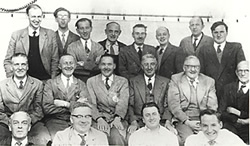 ‘The Transit Camp’, located on the ground, first and second floors of a building erected within the then Bessemer Lab in the RSM This allowed the old facilities, which were only a single storey high located at the rear of the City and Guilds main building, to be demolished and the first of four four-year stages of a new building started. At that stage, before the Robbins’ Report of 1963 had been accepted by the government of the day, the College seemed (at least from the view of the Department) to be given a carte-blanche to plan its new building in both space and cost of equipment. This building (known during building as E-Block, stages 1 to 4) was erected to house a greatly expanded Mechanical Engineering Department, which ran a common first year course for all the engineering departments, and also included Management Science, a post-graduate only section. The common course involved some 800 different first year undergraduate students, plus about 200 second and third year Mechanical students. Post-graduate student numbers greatly increased, from some perhaps 10 or 20 in the late 1940s, to more than a 100 by the 1960s. About half of these were on one year MSc courses and the remainder conducting research. The academic staff in the Department reached about 80 members and the combined technical and secretarial staff, just reached 100 persons for a brief time.
‘The Transit Camp’, located on the ground, first and second floors of a building erected within the then Bessemer Lab in the RSM This allowed the old facilities, which were only a single storey high located at the rear of the City and Guilds main building, to be demolished and the first of four four-year stages of a new building started. At that stage, before the Robbins’ Report of 1963 had been accepted by the government of the day, the College seemed (at least from the view of the Department) to be given a carte-blanche to plan its new building in both space and cost of equipment. This building (known during building as E-Block, stages 1 to 4) was erected to house a greatly expanded Mechanical Engineering Department, which ran a common first year course for all the engineering departments, and also included Management Science, a post-graduate only section. The common course involved some 800 different first year undergraduate students, plus about 200 second and third year Mechanical students. Post-graduate student numbers greatly increased, from some perhaps 10 or 20 in the late 1940s, to more than a 100 by the 1960s. About half of these were on one year MSc courses and the remainder conducting research. The academic staff in the Department reached about 80 members and the combined technical and secretarial staff, just reached 100 persons for a brief time.
Top left: Dr Peter Benham (later Professor of Aeronautics at Queens' University, Belfast, now deceased), top right: The author. Benham and I were the academic staff accommodated in the 'Transit Camp' to run the labs there. Middle row second from right: Reg Dubbins (then departmental superintendent), bottom row, second from left: Ron Wells (next departmental superintendent)).
Towards the end of this hectic period of planning and building, the space and financial controls of the post-Robbins’ era of general expansion came into force. At the time, it seemed we just escaped them but subsequently the Department paid a heavy price in that we became judged (for space) on the new norms whereas the building had already been completed to our own pre-norms standard. Parts of ‘E-block’ were soon used for other purposes; the Management Science Section became a separate Department including Industrial Sociology; the Common Course was eroded as each other Department of the College found it advantageous to run their own first year courses. The reasons were said to include both work 'tailored’ to the needs of their later years and also a better financial deal by using their own staff for their own first year teaching hours rather than ‘inflating’ the numbers of mechanical engineering staff to do that teaching. The College Computer Centre took about half of Level 4 in parts of the E1 and E3 areas and, in yet more recent changes, the Tanaka Business School has been built in what were parts of E2 and E4. (Photo above: Staff in the so called 'Transit Camp' into which the Mechanical Engineering workshops and materials testing laboratories moved for a few years, to allow the new departmental buildings to be started, 1958.
The four re-building stages, E1 to E4, were telescoped into three periods of erection, each of which overran its nominal four year period. The whole project lasted 16 years, perhaps half the working life of a member of staff, during which teaching went on amidst all the building work. The greatest nuisance was the drilling of concrete anywhere in the whole block, which reverberated to such an extent that lectures had to be abandoned ‘in mid-flight’ until the drilling could be stopped. That process involved the Department telling the College Building Office, who got the main contractors to pass the word to the relevant sub-contractor (who might resist the call, unless he could claim compensation for the holding up of his schedule), by which time that particular lecture had been abandoned. In the whole of the 16 year re-building period, a number of laboratories were moved several times. For example, the Strength of Materials undergraduate laboratory had to be moved from ‘The Transit Camp’ (to make way for new building in the Royal School of Mines.) into a temporary home in E1 (in what subsequently became the Technicians’ Common Room) then into the E2 stage and finally (by which time the single undergraduate laboratory had been replaced by one for each student year) into parts of E2, E3 and E4.
There were few complaints from students, who seemed to accept the disruption for the good (one supposes) of future generations of students. Some academic staff had a very busy time planning and implementing new post-graduate courses and planning and commissioning new laboratories but seemed to accept the extra burden in exchange for the new equipment they could order and perhaps (for younger staff) the hope of early promotion as the staff number increased appreciably each year for many years.
(Photo left: Staff and research students of the Applied Mechanics section of 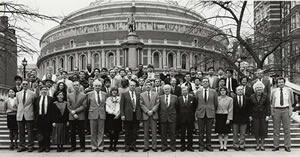 Mechanical Engineering on the steps of the Royal Albert Hall, 1990.
Mechanical Engineering on the steps of the Royal Albert Hall, 1990.
Front row from left: Hugh Macgilivray, Professor Tony Kinlock, Maria Charalambides, Dr Patrick Leevers, Professor Sacha Kennaway, Dr Leda Braga, Professor Gordon Williams, Dr George Webster, me, Dr John Radon, Professor Roger Fenner, Dr Fusan Nadira, Dr Paul Isherwood, Mrs Sheila Webster, Dr Shaun Crofton)
The Second Half of the 20th Century
The topics just mentioned, in both teaching and research, grew to maturity in the second half of the 20th century.
During the war, work had been done of the so-called FIDO system (‘fog; intensive dispersal of’) in which large amounts of fuel were burned near a runway, to allow the safe landing of aircraft in foggy weather. This reflected the interest in heat-transfer and combustion in Sir Owen Saunder’s group and led on to much other work in those disciplines, including in due course, work on dual-fuel internal combustion engines, gas turbines and then nuclear power. The interest in fluids, exemplified in the 1920s-40s by text books on Hydraulics, rapidly changed in the 1950s to the then new subject of Fluid Dynamics, (under Dr (later Professor) D. B. Spalding) with the Section re-named as ‘Thermo-fluids’. An emphasis on compressible flow of gases, together with the work on combustion and the coming of computers, grew into world leading work on such as gas turbine combustion chambers and furnaces, vital to the progress of aero-engines and coal-fired power stations. An external company CHAM, was set up (perhaps in the late 1960s) that was exploited quite widely by research groups in industry but headlined only in the technical press.
Also in the 1940s, Dr Hugh Ford’s group in Dynamics set up both a teaching and a research laboratory under Dr (later Professor) Peter Grootenhuis. This led to work of much practical importance on the isolation of buildings from vibrations caused by, for example; passing trains. In the Strength of Materials field both theoretical and experimental work started on plasticity (Hugh Ford’s own speciality) and stress analysis, both experimental programmes initially having to use the one new testing machine that had been obtained since World War II. The understanding of plasticity was quite a new field. Conventional design is based on elastic behaviour (where loads cause small deformations that disappear on unloading, whereas plasticity causes permanent changes in shape) but the production of metals by rolling, forging or extrusion are very much plasticity-dominated procedures, hitherto based on empiricism and experience. Another new application of plasticity soon emerged in the recognition of ‘low cycle fatigue’ (as opposed to the well known high cycle fatigue with perhaps millions of applied cycles before failure occurred) as a serious problem in a number of highly stressed structure, of which the ill-fated de Havilland ‘Comet’ aircraft was the prime example. Although the Department was not directly involved in that problem, it recognised that local stresses in the plastic regime were a key to understanding such behaviour. At about the same time, stress analysis was moving from algebraic formulation of problems to numerical computational methods, particularly by a technique called ‘finite elements’. The world leading exponent of analysis by ‘finite elements’ was Professor Argyris in the Aeronautical Department, but Dr Pedro Marcal in the Mechanical Department formulated the first finite element program to include plasticity, in a manner that allowed the computations to converge to a correct answer (a slightly earlier American program that seemed to work did not so converge.) Dr Marcal later ‘went down the brain drain’ to America and set up a leading firm for computing stress analysis solutions including plasticity, for engineering problems, the MARC Corporation.
There were five more developments in Applied Mechanics sponsored by Hugh Ford around the 1960s.
i) the start of a Lubrication (or Tribology) laboratory with an associated research group under Dr (later Professor) Alistair Cameron, which soon became a leading force in that field, later gaining recognition and awards in America.
ii) the founding of a Bio-mechanics Group under Dr S. A. V. Swanson (later Professor, Head of Department and then Pro-Rector). This group was one of the first, if not the very first, to include a medical doctor in a team working day by day with research students in mechanical engineering, studying problems including knee joint prosthesis and the properties of synovial fluid.
The third and fourth advances were within the Strength of Materials Section namely;
iii) the study of the mechanical properties of ‘plastics’, which properties are quite different from the well known elastic and (at the time, recent) plastic properties of metals. This work soon came under the control of Dr J. G. Williams (later Professor and Head of Department) and in due course expanded to include composites and now adhesives (under Professor A. Kinlock).
iv) Fracture Mechanics, a ‘new’ subject originally glimpsed by a British worker, Dr A. A. Griffith, in the 1920s but left dormant until picked up by the Americans in the late 1950s when they suffered unexplained failures of their early rocket motor casings. This work brought together a number of other streams in the Section, both ongoing and yet to be formulated.
v) The fifth advance was the launch of a post-graduate course in Industrial Design Engineering, overseen by Professor J. M. Alexander. This course was quite a new concept in its time and took engineering graduates (from the College or elsewhere) into the very different ethos and atmosphere of the Royal College of Art, where they were tutored by a joint team of staff from both Colleges. For a number of years this course remained unique but somewhat similar course at other universities and art schools have since sprung up.
Two fresh research ventures were spun off the Nuclear Power Section. The first was a study of aerodynamics applied to the movements of pollutants in the atmosphere under Dr (later Professor) P. Goddard. This ‘hit the headlines’ at the time of the Chernobyl disaster, when it successfully predicted much of the pattern of contamination that reached Western Europe. Professor Goddard later moved from the Department into the College Centre for Environmental Studies.
The second ‘spin off’ was by Dr (later Professor) C. Besant, who specialised in the use of robots in reactors. He later widened that work to a number of robotic machines and then more generally to design and production in mechanical engineering industry. This work culminated in setting up an external company, TurboGenSet, in about the 1980s, to offer a very compact and high output generating set for possible use as ‘portable power’ standby facilities for hospitals, disaster areas and the like. The company soon hit the headlines in the financial columns of the press, but hardly caused a ripple felt by the wider public.
My Own Work and that of Closely Related Colleagues
Much of my own work was first associated with experimental stress analysis and, from about 1955, with the setting up of temporary laboratories in the so-called ‘transit camp’, to allow work to continue as demolition preceded any re-building.
The stress analysis studies focused on thin-walled bodies known as ‘plates and shells’. The particular bodies in question were associated with the early installations of gas turbines (as opposed to steam turbines) in naval vessels. Study soon revealed very high local bending stresses that would have led to premature failure by fatigue in the ‘low cycle’ regime referred to above. This ‘in house’ experience coupled with the ‘Comet’ failures mentioned above, was the driving force for the introduction of plasticity into numerical analysis (though not initially by the finite element programs already mentioned).
During the war, the Admiralty (later Navy Department) set up a committee of academic and industrial members to study the many failures of so-called ‘Liberty’ cargo ships and associated tanker vessels, during World War II. These ships were mass produced in America as an emergency wartime procedure to keep supplies flowing across the Atlantic during the U-boat menace. They were made by welding, often performed by barely trained workers and using the simplest steel available. Twenty of those ships broke completely in half. 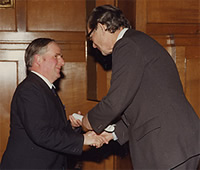 When some fractures occurred in post-war ships, oil rigs and some oil storage tanks, the Committee was re-formed in about 1959 under the Chairmanship of Hugh Ford, with many laboratories, including my own contribution within the Mechanical Engineering Department, joining in an extensive programme of testing. Whilst those studies provided design and fabrication methods to avoid such fractures in service, the fundamental scientific problem of brittle (cleavage) fracture in normally ductile steels was not solved. As already mentioned, in the early 1960s the concepts now known as ‘fracture mechanics’ were expounded by Dr George Irwin in USA for very high strength steels relevant to specific American problems. This work was first introduced into Britain as about the last contribution of the foregoing Navy Department Committee. The essence of the new method was a recognition of the importance of small defects or cracks, perhaps induced during fabrication or early use, which might grow unnoticed (for example on the inside of a vessel) and finally lead to fracture. The Department was the first in a university to introduce the subject to a UK audience but due to the very extensive experimental and administrative work required to disseminate the work into British industry and to formalise the method into a British Standard Specification, the implementation of this first round of work, known as ‘linear elastic fracture mechanics’, was taken over by the then British Iron and Steel Research Association (BISRA).(Photo above: Me receiving an award at the Institute of Mechanical Engineers, at the hands of Hugh Ford, the then President).
When some fractures occurred in post-war ships, oil rigs and some oil storage tanks, the Committee was re-formed in about 1959 under the Chairmanship of Hugh Ford, with many laboratories, including my own contribution within the Mechanical Engineering Department, joining in an extensive programme of testing. Whilst those studies provided design and fabrication methods to avoid such fractures in service, the fundamental scientific problem of brittle (cleavage) fracture in normally ductile steels was not solved. As already mentioned, in the early 1960s the concepts now known as ‘fracture mechanics’ were expounded by Dr George Irwin in USA for very high strength steels relevant to specific American problems. This work was first introduced into Britain as about the last contribution of the foregoing Navy Department Committee. The essence of the new method was a recognition of the importance of small defects or cracks, perhaps induced during fabrication or early use, which might grow unnoticed (for example on the inside of a vessel) and finally lead to fracture. The Department was the first in a university to introduce the subject to a UK audience but due to the very extensive experimental and administrative work required to disseminate the work into British industry and to formalise the method into a British Standard Specification, the implementation of this first round of work, known as ‘linear elastic fracture mechanics’, was taken over by the then British Iron and Steel Research Association (BISRA).(Photo above: Me receiving an award at the Institute of Mechanical Engineers, at the hands of Hugh Ford, the then President).
A Personal Interruption
As the conflated E-3 and E-4 stages of the new departmental building were coming to completion, the then Assistant Director in the Department, Dr Russell Hoyle, left, in 1967. Under the direction of Sir Owen Saunders and Dr Hugh Ford, Dr Hoyle had been responsible for the day to day supervision of the building programme and particularly the commissioning of the E-1 and E-2 parts of the building. That duty now fell upon me as the incoming Assistant Director, just as the Department moved into the E-3 and E-4 stages of the building. In 1973, I resigned from the post of Assistant Director and returned to normal teaching and research duties.
Research in Fracture Mechanics
With the coming of the first generation of Nuclear Power stations, which used welded steel containment vessels, the one time Navy Committee was again reformed under the aegis of the then United Kingdom Atomic Energy Authority and led to a study of fracture problems in structural steels in the light of fracture mechanics. The Department again joined in this work, taking a leading role in introducing the effect of plasticity, a vital step for the circumstances of many welded structures made of conventional types of structural steel (as opposed to the high strength steels of the American work) collaborating with the then Welding Institute (now just WI) in a series of short ‘Post-Experience’ courses for industry, including, as previously mentioned, the use of plasticity in finite element programs, the only such program available when these courses started. That work continued until after the building of the most recent British reactor at Sizewell, in the 1970s and ‘80s, when safety aspects of the pressure vessel were studied at great length by the Marshall Committee (named after its Chairman), a body comprising two rather opposed factions, the Central Electricity Generating Board (CEGB the then operator of all the UK fossil and nuclear power stations) proposing to build a certain reactor and the Nuclear Installation Inspectorate representing the public interests, on behalf of the Health and Safety Executive. I served as an independent representative. It was recognised that local plasticity greatly affected the predictions made by the simplest ‘linear elastic’ formulation, so that the inclusion of the effects of plasticity were vital. That generation of work finally ceased with the building of the Sizewell ‘B' nuclear power station, the most recent to come into use in this country.
The concepts of fracture mechanics were extended to slow crack growth under the influence of corrosion, fatigue and creep, the Department taking a leading role in the last mentioned.
The focus for the dissemination of all aspects of fracture mechanics was in America, particularly via annual conferences of the American Society for Testing and Materials (ASTM) and later, (from about the late 1970s), in Europe by a body variously known as the European Group on Fracture (EGF) and then, the European Institute for Structural Integrity. At an anniversary of an event long since forgotten, it was pointed out by the Chairman of an ASTM. meeting that papers by the Department were the largest number of overseas contributions to their conferences. The writer was also a founder member of a half dozen or so ‘fracture enthusiasts’ who launched the EGF, at a meeting in Switzerland. The secretariat of EGF was taken up by the Netherlands for want of a domestic source of funding.
In 1976, I was seconded to the Division of Materials Application of the National Physical Laboratory (NPL). By chance, about a couple of weeks before I took up that post, there 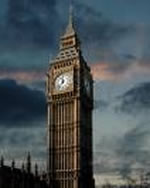 was an accident to ‘Big Ben’ (or more strictly the Great Clock of Westminster, not the bell itself). That news certainly hit the national headlines but as with most such events soon passed into obscurity. However, at NPL I was able to analyse the fatigue action that caused the failure, using fracture mechanics to show that the crack had been growing during all the life of the clock from its installation in 1859.
was an accident to ‘Big Ben’ (or more strictly the Great Clock of Westminster, not the bell itself). That news certainly hit the national headlines but as with most such events soon passed into obscurity. However, at NPL I was able to analyse the fatigue action that caused the failure, using fracture mechanics to show that the crack had been growing during all the life of the clock from its installation in 1859.
This was the first known application of that new subject to such an old artefact and led to the realisation that any long serving mechanism might be at risk, rather than the previous conception that ’it has lasted all these years so will surely be safe for another long period’. All these matters were recorded in the technical press but, as far as I am aware, did not arouse even a ripple in the national press.
A further brief secondment to British Aerospace followed. This again related to the application of plasticity to certain fracture problems, hitherto treated by only linear mechanics. (Photo above; Big Ben)
To this day, the final resolution of the problem of cleavage fracture of otherwise ductile steels, is not agreed by all. Further problems spun off from the nuclear pressure vessel studies, notably the slow stable tearing of quite ductile materials that could ultimately lead to fracture, spread to other safety problems. As far as I was concerned these related particularly to ships and to the newer constructional materials, such as titanium and to off-shore platforms where the design method originally preferred by CEGB for all their pressure vessels, proved capable of extension to the very different circumstances of the large welded off-shore platforms. All that work made use of both experimentation and the elasto-plastic finite element programs mentioned earlier.
At the present time, the focus of fracture studies has moved from metals to polymers, composites and adhesives, with the Department, as already mentioned, still playing a leading role in both experimental and computational studies of fracture.
© 2007 Imperial College London
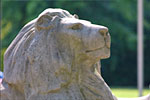
Through the first decade of the twenty-first century the campaign seeks to philanthropically raise £207 million from Imperial’s alumni, staff and friends, and donations from charitable foundations and industry.
Where your support can make a differenceGive now
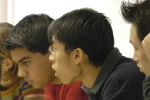
Imperial’s Centenary Year provides an opportunity to recognise and celebrate members of the Imperial community.
View staff and student portraits